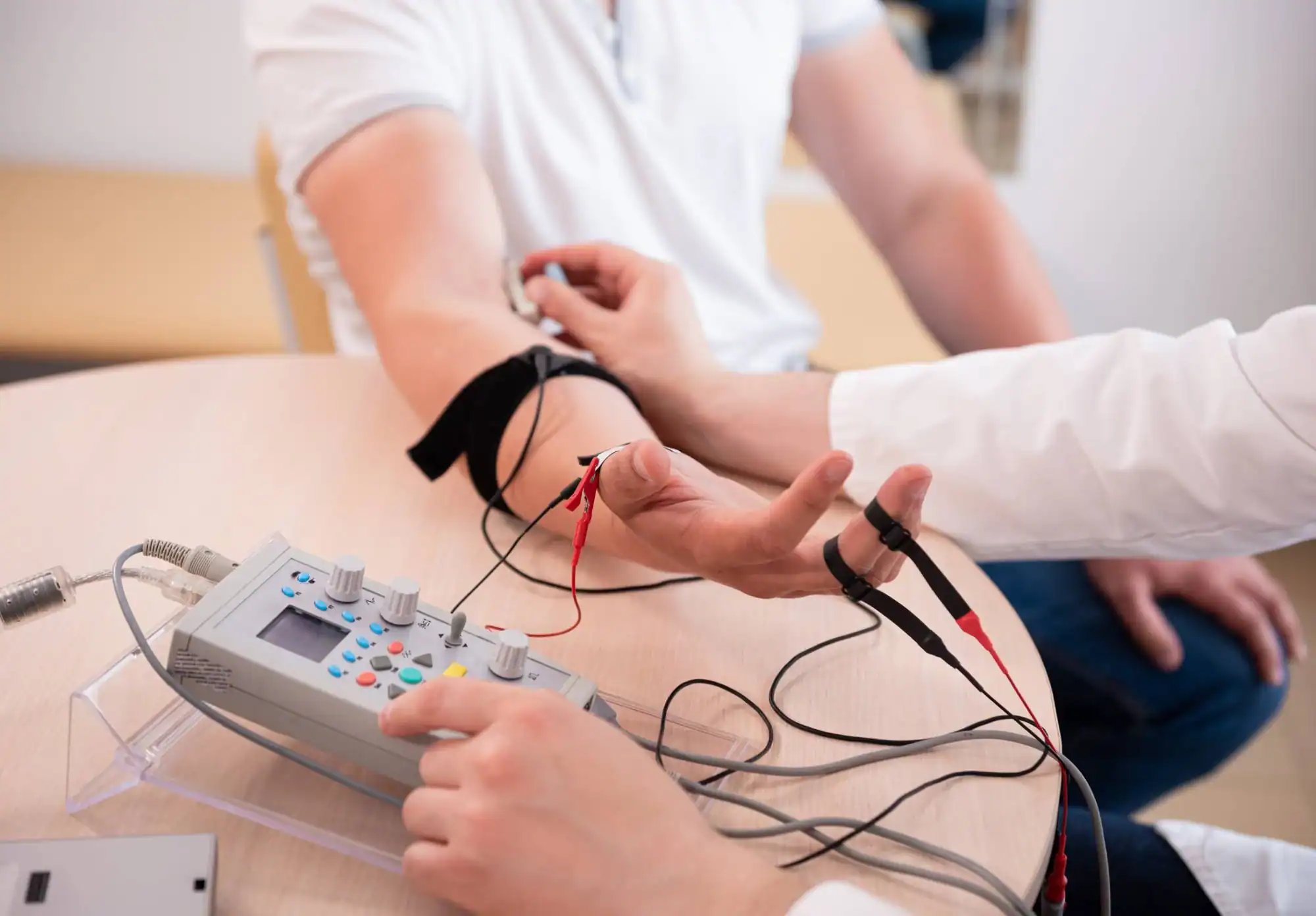Advanced electromyography testing that pinpoints nerve and muscle problems so you can move forward with confidence.
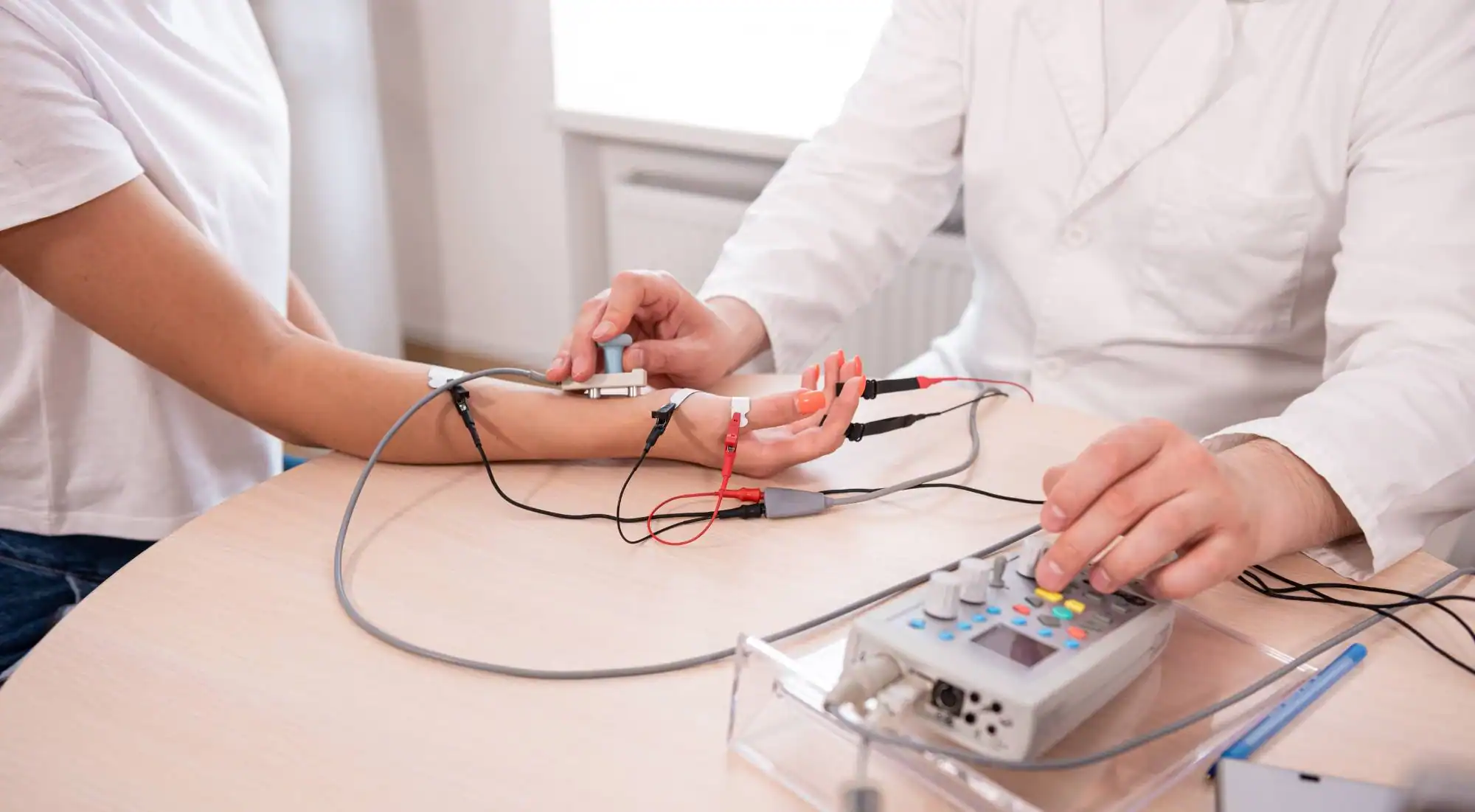
Reviews
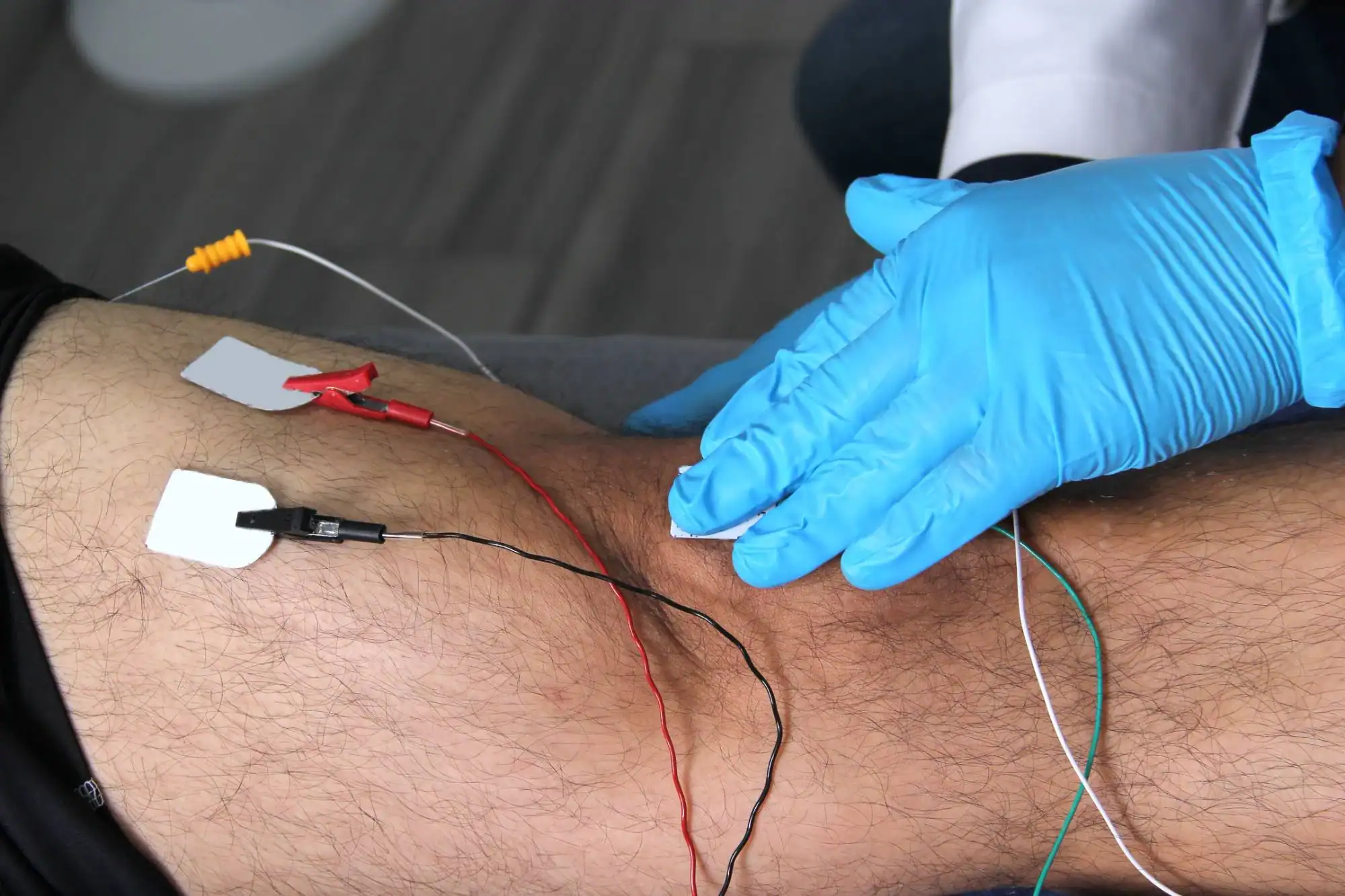
You’ve been dealing with numbness, tingling, or muscle weakness long enough. Maybe your fingers go numb at night, or your leg feels weak when you walk. Perhaps you’re experiencing pain that shoots down your arm or back.
EMG testing gives you the definitive answers you need. This diagnostic procedure measures the electrical activity in your muscles and nerves, revealing exactly where problems exist and how severe they are.
When you know what’s actually happening in your body, you can make informed decisions about treatment. No more guessing. No more wondering if symptoms will get worse. Just clear, actionable information that puts you back in control of your health.
NY Spine Medicine has been serving patients throughout Northern New Jersey with comprehensive diagnostic and treatment services. We focus specifically on spine, nerve, and muscle conditions that affect daily life.
We understand that when you’re dealing with unexplained symptoms, you need more than just a test. You need clear explanations, honest answers, and a path forward that makes sense for your situation.
Located conveniently in the heart of Bergen County, we provide the specialized care you’d expect from a major medical center, with the personal attention you deserve as an individual.
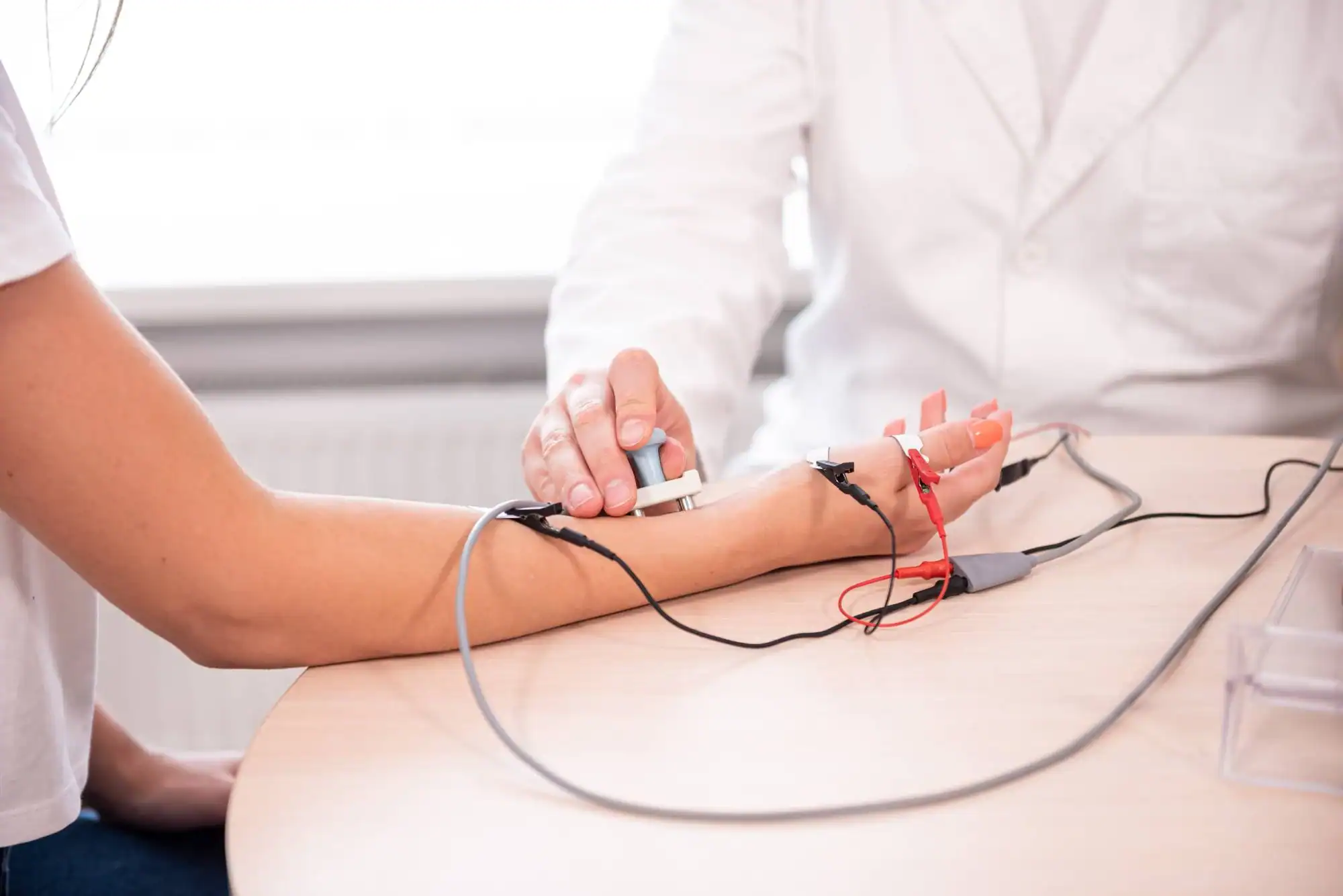
The EMG test has two parts: nerve conduction study and electromyography. During the nerve conduction study, small electrodes are placed on your skin to measure how well electrical signals travel through your nerves.
For the electromyography portion, a thin needle electrode is inserted into specific muscles to record their electrical activity. This sounds more uncomfortable than it actually is – most patients describe it as similar to getting blood drawn.
The entire process typically takes 30-60 minutes, depending on which nerves and muscles need testing. You’ll get preliminary results right away, with a complete report and recommendations within a few days. The information gathered helps determine if you’re dealing with nerve damage, muscle disorders, or conditions like carpal tunnel syndrome or pinched nerves.
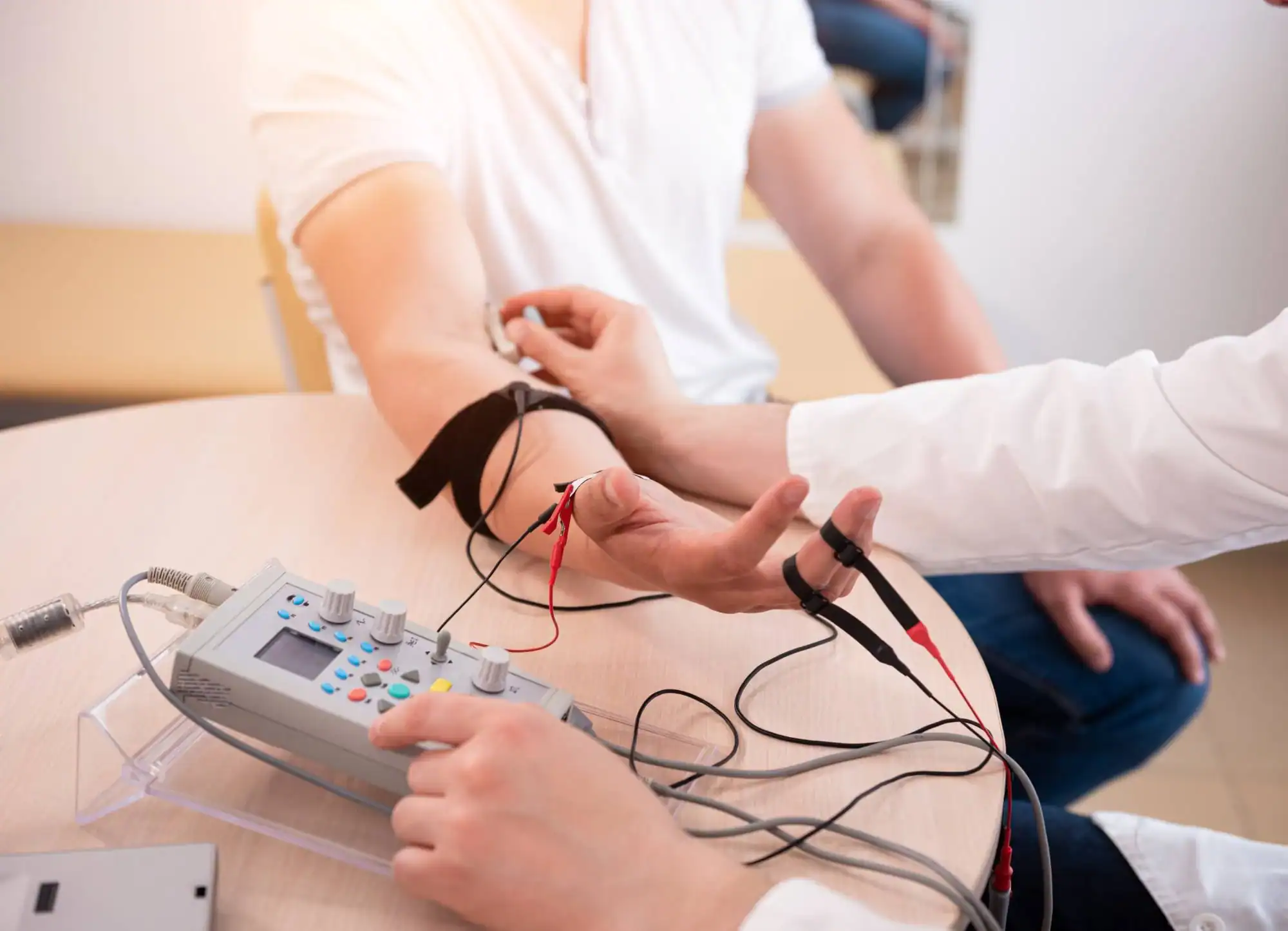
Ready to get started?
Our EMG testing at NY Spine Medicine includes both nerve conduction studies and muscle testing, giving you a complete picture of what’s happening. This comprehensive approach means you won’t need multiple appointments or referrals to different facilities.
Testing can diagnose conditions like carpal tunnel syndrome, herniated discs affecting nerves, peripheral neuropathy, muscle disorders, and nerve injuries. The results help determine whether your symptoms stem from nerve compression, muscle problems, or other underlying conditions.
You’ll receive clear explanations of your results, not medical jargon that leaves you more confused than when you started. We coordinate with your referring physician to ensure you get appropriate follow-up care based on the findings.
